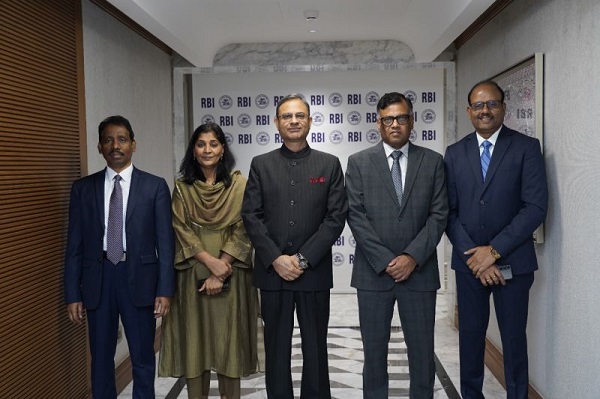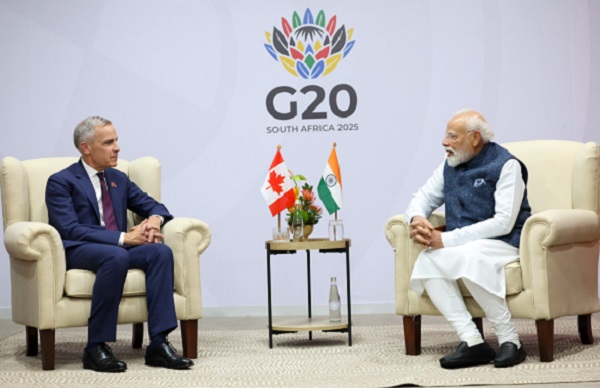.png)

Srinivasa Rao, ex-Economic Advisor at Finance Ministry, spent 28 years in IES, and now heads strategy at Bajaj Finserv.
October 16, 2025 at 4:26 AM IST
India has done what few expected. It has become the world’s biggest crypto market without actually recognising crypto. According to the 2025 Global Crypto Adoption Index by Chainalysis, India ranks first across all major metrics — from centralised exchange volumes to decentralised finance activity and institutional participation.
It’s an extraordinary contradiction: a country driving global adoption of an asset class that it hasn’t yet formally accepted.
The numbers are staggering. Crypto transactions in India now exceed $172 billion, with more than 107 million users. That’s the largest in the world. Most are young, aged between 18 and 35, based in cities like Delhi, Mumbai and Bengaluru.
Blockchain, the technology behind crypto, has found takers far beyond finance — from healthcare to education — and India already counts among the world’s top five blockchain developer bases. Platforms such as CoinDCX and WazirX are running free education programmes, hoping to build literacy in what’s still an opaque frontier.
But for all the enthusiasm, regulation continues to lag behind adoption.
Policy Paralysis
New Delhi has chosen to watch rather than legislate. The government fears that legitimising cryptocurrencies could bring systemic risks into the financial system. Instead, it’s taken the slower route by joining the OECD’s Crypto-Asset Reporting Framework from April 2027 to ensure global tax transparency, particularly for offshore holdings. It’s a nod to accountability, but not to acceptance.
For now, crypto in India sits in a twilight zone. It’s neither banned nor blessed, just taxed into submission. The Finance Act of 2022 slapped a 30% tax on gains, a 1% TDS on trades above the threshold, and even barred investors from offsetting losses. Even certain crypto gifts above ₹50,000 attract tax. Exchanges must share user data with tax authorities.
For a while, this gave the appearance of order. But in reality, it has throttled domestic trading and pushed an estimated 90–95% of volumes offshore, a silent capital flight that’s costing India liquidity, innovation, and credibility.
Crypto regulation in India has become a many-handed affair. The Finance Ministry looks after taxation, the RBI guards monetary stability, the Financial Intelligence Unit monitors for illicit flows, and SEBI stands by, ready to step in if tokens start resembling securities. CoinDCX, CoinSwitch, WazirX and Binance have all registered with the FIU, but they’re still operating in regulatory fog.
Ironically, the government’s own digital currency has moved faster. The RBI launched the Digital Rupee in 2023, one of the world’s first central bank digital currencies. It promises faster payments and greater transparency, and may soon link seamlessly with UPI.
The contrast couldn’t be sharper. The state-backed digital rupee is welcome, promoted, and supervised. Private crypto, meanwhile, is tolerated but fenced off.
Lessons Abroad
Look elsewhere, and the lesson is obvious: clarity attracts capital.
Countries that have gained by proactively regulating cryptocurrency provide compelling examples of how clear, balanced frameworks can drive growth, innovation, and investment while protecting consumers .
Switzerland, once seen as a traditional banking fortress, now runs the world’s most sophisticated crypto ecosystem. Its regulator, FINMA, has issued full banking and securities licences to players like Sygnum and SEBA, turning Zug into “Crypto Valley.” Regulation there is strict, but clear. And that’s what draws innovation.
Singapore’s Payment Services Act works the same way. The Monetary Authority of Singapore keeps a tight grip on anti–money laundering rules but otherwise lets legitimate exchanges thrive. The UAE set up its Virtual Assets Regulatory Authority to oversee all crypto activity, from exchanges to token issuance, making Dubai a hub for blockchain startups.
The US, despite its famously messy patchwork of agencies, still offers a form of regulatory certainty: the SEC treats most tokens as securities, the CFTC governs commodities, and the IRS taxes crypto like property. Japan, too, recognised cryptocurrencies under its Payment Services Act long ago. AML and KYC, along with strict consumer protection laws, promote the development of the crypto industry.
These countries show what India currently does not: that good regulation isn’t about control. It’s about confidence.
Losing Momentum
Across Asia, crypto activity is surging. The region’s transaction value rose nearly 70% year-on-year to $2.36 trillion, driven largely by India, Pakistan and Vietnam. Yet India, despite its dominance in adoption, risks losing the commercial edge to markets that are simply more predictable.
The 30% tax, the 1% TDS, and the absence of a coherent law have discouraged serious institutional investors and drained liquidity from Indian platforms. With every tax tweak and regulatory shrug, Indian crypto entrepreneurs are packing their bags for Dubai or Singapore. The talent is following the money, and slowly, the head start India once had is slipping away.
Elsewhere, it’s a different story. In places like Switzerland and Singapore, clear rules have built real ecosystems that are credible, bankable, and open for business. The EU’s new MiCA framework pushes that idea further, forcing crypto firms to play by the same disclosure and protection standards that traditional finance has long lived by. These are not permissive models; they’re protective, without being paralysing.
India’s success in crypto adoption shows there’s a genuine appetite. But without legal clarity, the risks multiply: fraud, manipulation, loss of investor confidence.
A sound framework doesn’t have to mean liberalisation overnight. It means a single point of accountability — one regulator coordinating taxation, consumer protection and market oversight. It means requiring disclosures from exchanges, securing data, and enforcing anti–money laundering norms consistently.
Most importantly, it means the government recognising that crypto is not just speculation; it’s infrastructure.
India can still lead this revolution. The country’s crypto ecosystem has already proven its scale; now it needs legitimacy. The world won’t wait for India to decide.
If regulation continues to drift, the world’s largest crypto market might remain just that — large, but leaderless.




